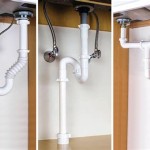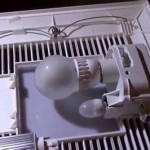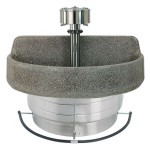Bathroom Sink Tap Won't Turn Off: Troubleshooting and Repair
A bathroom sink tap that refuses to turn off can be a source of frustration and water waste. This issue, while seemingly simple, can stem from various underlying causes. Understanding the potential culprits and troubleshooting steps can help homeowners resolve the problem effectively. This article will delve into the common reasons behind a stuck bathroom sink tap and provide practical solutions for each scenario.
1. Worn-Out O-Rings or Washers
The most common culprit behind a leaky tap is worn-out O-rings or washers. These small rubber or plastic components create a seal between the tap's moving parts, preventing water from flowing when turned off. Over time, these components can deteriorate, harden, or become brittle. The result is a loose seal that allows water to leak through even when the tap is fully turned off.
To address this issue, the O-rings and washers need to be replaced. Here's what you'll need:
- A small screwdriver or wrench
- Replacement O-rings and washers (specific sizes vary based on tap model)
Follow these steps:
- Turn off the water supply to the sink.
- Remove the handle from the tap. This may involve unscrewing a screw or pressing a button, depending on the tap's design.
- Locate the O-rings and washers underneath the handle. They may be attached to a stem or cartridge inside the tap.
- Carefully remove the old O-rings and washers and replace them with new ones of the same size and material.
- Reassemble the tap and turn the water supply back on.
- Test the tap to ensure it turns off properly.
2. Clogged Aerator
The aerator is a small, mesh-like component at the end of the faucet spout. It mixes air with water, creating a smooth, even stream. However, over time, the aerator can become clogged with mineral deposits, debris, or other contaminants. A clogged aerator restricts water flow, making it difficult to turn the tap off completely.
To address this issue, the aerator needs to be cleaned or replaced. Here's what you'll need:
- A small wrench or pliers
- A bowl or container to catch water
- Vinegar or a commercial aerator cleaning solution (optional)
Follow these steps:
- Turn off the water supply to the sink.
- Unscrew the aerator from the spout. It may be threaded on or held in place by a clip.
- Soak the aerator in vinegar or aerator cleaner for a few minutes. You can also use a small brush or toothbrush to remove any stuck debris.
- Rinse the aerator thoroughly with water.
- Reinstall the aerator onto the spout.
- Turn the water supply back on and test the tap for proper functioning.
If cleaning the aerator does not resolve the problem, it may need to be replaced with a new one. Look for a replacement aerator compatible with your tap model.
3. Worn-Out Cartridge or Stem
Some taps, particularly those with a single lever or a built-in diverter, use a cartridge or stem to control water flow. These components contain internal seals and mechanisms that wear down over time. A worn-out cartridge or stem can cause leaks or make it difficult to turn the tap fully off.
Replacing a cartridge or stem is a more involved process that may require specialized tools and knowledge of your tap's specific model. It's recommended to consult a qualified plumber if you suspect this is the issue.

Bathroom Sink Faucet Won T Stop Running Doityourself Com Community Forums

My Kitchen Faucet Won T Turn Off

Faucet Won T Turn Off Tips From A Houston Plumber Santhoff Plumbing

Leaking Tap How To Fix It Bella Bathrooms Blog

Bathtub Water Faucet Won T Turn Off

Four Reasons Why Your Faucet Won T Stop Dripping Service Plus Plumbing

Bathtub Faucet Won T Turn Off What To Do Alpha Building Inspections

Fixing A Tap When The Stop Will Not Turn Off

My Tap Won T Stop Dripping What Should I Do Around The Bend Plumbing

Hot Water Faucet Won T Turn Off Because I Accidentally Left On During Stem Removal Terry Love Plumbing Advice Remodel Diy Professional Forum
Related Posts







